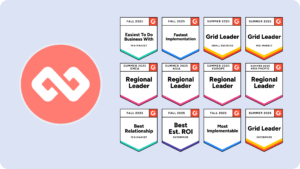Employee recognition is a crucial part of building a positive and productive workplace culture. With the right recognition program in place, you can motivate your staff, increase job satisfaction and retention rates, and promote a sense of belonging. There are various types of employee recognition, and it can be tricky to determine which the right fit is. In this article, we’ll explore the various types of employee recognition and some practical tips for using them effectively.

Understanding Different Types of Employee Recognition and Their Impact
The first step in implementing an employee recognition program is to understand the different types of employee recognition and their impact. Let’s talk about the 8 types of employee recognition according to Indeed and discuss their unique benefits and impact.
1. Incentives and Bonuses
These include seasonal or conditional bonuses and monetary rewards such as commissions. These can be given on a department, team, or individual level.
These work well to motivate team members to work towards certain goals and objectives and as such are a great type of recognition to give more goal-oriented team members.
2. Written Praise
Written praise can come in the form of small thank-you letters or emails, or more public written forms of appreciation such as Slack messages on team channels.
This is an easy form of praise to practice and works well on personality types who value encouragement and positive reinforcement.
3. Verbal Praise
Verbal praise is the in-person recognition employees receive for their work. This could be something small such as a quick thank you when submitting work or completing tasks, or big gestures such as a public shoutout for a team member who has done an excellent job.
This is another easy form of recognition to practice and works well for team members who are motivated by immediate external validation.
4. Formal Recognition
This type of recognition typically follows a schedule and structure. This comes in the form of awards like “employee of the month/year” or celebration of work anniversaries.
This is a great form of motivation for individuals with a competitive streak or like public validation and awards.
5. Informal Recognition
This kind of recognition occurs sporadically and exists to provide constant reassurance. This can include small notes or messages, shoutouts on the team message board or Slack, or small tokens like a coffee voucher or a small surprise treat.
This a great way to create a constant attitude of gratitude as well as build appreciation and recognition into team culture and overall company culture.
6. Peer-to-Peer Recognition
This type of recognition is when team members or employees on the same level or department give each other recognition. This can be done both privately or publicly.
Encouraging this type of recognition improves how your employees work together as it allows them to build and maintain positive relationships with their coworkers. This, in turn, contributes to improving company culture as a whole.
7. Leader-to-Member Recognition
This occurs when leaders offer their direct reports some form of praise and show appreciation for a job well done.
People often look to their leaders for validation and encouragement, as well as take their cue for how to go about their business in the organisation. So this type of recognition hits two birds with one stone. Firstly, it addresses the need for staff encouragement from leaders. Secondly, it also sets the tone for how team members relate with each other. Both of these contribute to a positive and supportive work environment.
8. Day-to-Day Recognition
This includes the small gestures that show appreciation within the organisation. This can be something as simple as ending meetings by thanking attendees for their time or even sending a team message at the end of every project with an acknowledgement of everyone’s contributions.
This kind of recognition may look small but the effect, especially when practised consistently, is great. Everyday positivity, even in small doses, creates a great atmosphere and a culture where high standards are celebrated and reinforced everyday.
Different types of employee recognition have their own benefits and drawbacks. So it follows that the impact it has on your employees will vary. So remember that recognition, to an extent, should be tailored to the individual employee’s preferences and needs. Some employees may prefer public recognition, while others may prefer private recognition. By understanding the different types of recognition and their impact, employers can create a recognition program that is effective and meaningful for their employees.
Identifying and Implementing the Right Type of Recognition
The key to implementing the right type of recognition is to identify what motivates your employees. For example, if your employees are primarily motivated by financial incentives, then bonuses might be the way to go. On the other hand, if your employees throve more on meaningful validation and encouragement, then verbal recognition may be the way to go.
It’s also essential to consider the type of work your employees do. For instance, if your employees are in sales positions, then performance-based incentives might be ideal. Conversely, if your employees are in creative roles, public recognition might work better as it allows them to feel appreciated for their unique contributions.
Once you have identified the right type of recognition, the next step is to implement it effectively. This can be a complicated process, but here are some key factors to consider.
- Understand your workforce. Assess your teams and identify what will motivate them. By understanding your employees’ preferences, you can tailor your employee recognition program to be as effective as possible.
- Alignment with your organisation’s goals and values. If you want to promote teamwork, for example, you may want to focus on recognising employees who collaborate well with others.
- The cost of your recognition program. While monetary rewards may seem like the most effective way to motivate employees, they can be expensive. Fortunately, there are other recognition types that can be just as effective without breaking the bank.
- Frequency of recognition. While some employees may prefer to receive recognition daily or weekly, others may prefer to receive it less frequently. While it’s important to recognize employees for their hard work, overdoing it can decrease the impact of the recognition. Remember to strike a balance. Ensure that recognition is given regularly but not so often that it loses its impact.
- Personalized recognition. While some employees may prefer public recognition, others may prefer private recognition. It’s important to understand each employee’s preferences and tailor recognition accordingly to ensure that it is meaningful and effective.
- Communicating the program specifics to your team. It’s important to make sure that everyone knows how the program works. Set clear goals and objectives and provide feedback regularly to employees.
- Program evaluation. Regularly evaluate the effectiveness of your recognition program. This can be done through employee feedback, surveys, and tracking metrics such as employee retention and productivity. By regularly assessing your program, you can make adjustments and improvements to ensure that it continues to meet the needs of your employees and organisation.
- Make it fair and consistent. All employees should have an equal opportunity to be recognized for their contributions, regardless of their position or tenure with the company. This can help to foster a positive and inclusive work environment, where all employees feel valued and appreciated.
- Make it part of the culture. Making recognition a part of the organizational culture enhances the positive effects of your program and ensures it goes deeper than just a company activity.
Rewards and Incentives: Getting the Most Out of Your Recognition Program
One of the biggest challenges of implementing an employee recognition program is ensuring that it remains engaging and effective over the long term. To achieve this, your recognition, rewards, and incentives need to be meaningful and impactful, but also, you need to set up a program that keeps your people interested and motivated. Here are a few ways you can add something more to your program to keep your people engaged.
Experiment with different types of rewards
While bonuses and certificates are nice, some variety in the way you reward your people can be good. different people value different kinds of rewards. Some might not really care about the certificates and awards but be absolutely thrilled about a high-value monogrammed gift. Likewise, instead of a small financial reward, some people might prefer to get a bonus few paid days off.
Gamification
Introducing a competitive element to meeting personal or company goals is a great motivator for certain personality types. Public leaderboards and progress trackers can be a great way to recognise those who are working hard and hopefully motivate their teammates and colleagues.
Tiered Rewards
Similar to gamification, this involves setting up multiple levels of rewards, with each level becoming progressively harder to achieve. This can help keep employees motivated and engaged over the long term, as they work towards achieving the next level of recognition.
The Importance of Follow-Through to Ensure Recognition is Effective
Finally, it’s crucial to follow through on your recognition program. This means that you don’t stop at just giving the reward and calling it a day. It also means making sure that, as time goes on, the rewards and incentives you give out are still relevant and meaningful to your people. That means checking in and gathering feedback to ensure that your employee recognition program is doing its job.
Another way to make sure that you’re following through on the praise and recognition you give your people is to reward them with opportunities instead of just one-time rewards.
Offering opportunities for professional development is highly valued by employees. Giving them additional budget for training programs or conferences or enrolling them into mentoring programs can be just as effective as financial incentives.
Why Mentoring
Your people want opportunities to learn and develop their skills and knowledge while they’re working for your organisation. One of those opportunities, and one that is highly sought after for many different reasons, is mentoring. An opportunity to be mentored by leaders in your organisation is a great reward that many in your organisation would be quite motivated to work towards.
And we know what you’re thinking – that sounds like so much admin. But worry not! Mentoring software like Mentorloop can help you make mentoring a key part of your employee recognition program with little effort required on your end.
Learn more about how Mentorloop works to help anyone coordinating a mentoring program run their best programs yet.




